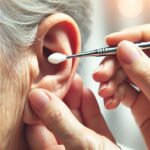Coffee chain Starbucks has opened its first café designed for customers with hearing and visual loss.
The cafe – in Washington DC – is part of a decision that Starbucks has taken to design easily navigable branches for all its customers. Any cafe that is renovated or opened in the US in the future will begin implementing the company’s “Inclusive Spaces Framework.”
Customers frequenting new stores will notice softer indoor lighting that minimises glare, shadow patterns and backlighting, making it easier for people to read menus or key information.
Acoustics

The store design will also take acoustics into account by using materials that minimise background noise or echoes which could disrupt people who use hearing aids.
In recent years, a number of retailers have begun considering the shopping experiences of customers with different needs. This awareness was heightened, in part, by the COVID-19 pandemic.
Confronted with social distancing guidelines, some retailers carved out specific blocs — typically early in the morning — when immunocompromised, elderly and disabled customers could do their shopping in a less crowded environment.
In addition to paying attention to ambience and noise, Starbucks said new stores will cut back on the front-of-house clutter to make it easier for customers in wheelchairs or motorised scooters to get around the stores.
Accessible

Counters where coffee and food is placed for pick-up will also be lowered to accommodate wheelchair access and support better communication between workers and customers.
Other changes include a new register that has a portable, adjustable stand, pictures of food and drink items, as well as voice assistance and screen magnification features.
“Starbucks opening of its new store built with inclusive design elements is a big moment as we try to make retail spaces more accessible and inclusive,” said Tony Coelho, primary author and sponsor of the Americans with Disabilities Act.
“We have to go beyond just what is required to put accessibility and inclusion first to ensure all people feel like they belong in community spaces.”

